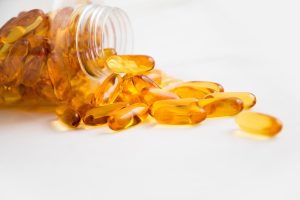 Most people know that lack of iron can lead to iron deficiency anemia, but they don’t realize that even a small deficiency, which doesn’t qualify as anemia, can affect their workout. Iron is necessary to transport oxygen, via the blood, to all tissues in the body. Iron is in hemoglobin and is what makes blood look red. There’s a lot of things that affect how much iron you have in your body. For instance, age can cause you to absorb less. Digestive problems, particularly issues like Crohn’s disease, blood loss, improper eating habits and heavy menstruation cycles can also lead to iron deficiency.
Most people know that lack of iron can lead to iron deficiency anemia, but they don’t realize that even a small deficiency, which doesn’t qualify as anemia, can affect their workout. Iron is necessary to transport oxygen, via the blood, to all tissues in the body. Iron is in hemoglobin and is what makes blood look red. There’s a lot of things that affect how much iron you have in your body. For instance, age can cause you to absorb less. Digestive problems, particularly issues like Crohn’s disease, blood loss, improper eating habits and heavy menstruation cycles can also lead to iron deficiency.
Iron is stored in other parts of the body, besides being in the blood.
The body stores iron in the spleen, liver, bone marrow and in the blood. The blood has about 2/3rds of the body’s iron. While you probably can’t tell whether you’re low on iron by simply looking at your blood, your body will tell you other ways. You won’t have the endurance you need and often find you’re out of breath. You look pale and are often tired. Low iron causes unexplained headache, heart palpitations, brittle nails, dry skin and hair, restless legs, cold extremities, a sore mouth and more frequent infections.
Athletic endeavors can rob you of iron.
You lose iron through sweat, the gastrointestinal tract, urine, skin and menstruation. While all exercise boosts the loss of iron, high intensity or endurance exercises increase the risk. In fact, athletes or people involved in exercise can lose up to 70% more iron than couch potatoes. Sweating, particularly after a rough workout, can lower your iron levels. If you have a higher heart rate, even though you’re fit, it might mean that you’re short on iron. Not only does sweating cause iron loss, red blood cells break down more quickly in athletes. Consider how your foot constantly hitting the ground if you’re a runner could affect your iron supply.
Depleted iron stores doesn’t necessarily mean you’re anemic.
You can face the problem of less energy and a poorer performance without actually being anemic.
If you’re low on iron, you’ll notice your endurance isn’t as good as it should be. That’s because it’s necessary to carry the oxygen from the lungs. Iron that’s more easily absorbed comes from eating foods such as shrimp, fish, chicken and beef. While vegetarian sources, such as tofu and pumpkin seed are good sources, the iron isn’t as readily absorbed.
- If you find yourself crunching ice cubes, you probably have an iron deficiency. One study hypothesized that ice might provide a mental boost.
- To boost your iron, eat food high in iron. Lean red meat, chicken seafood, dark leafy vegetables, beans and dried fruit are a few. Make sure you also have adequate vitamins B12, C and folate to boost the iron absorption.
- Don’t expect to see changes overnight. It takes as much as two months to replenish low iron stores.
- Iron from plant sources are harder to absorb, so vegetarians who are athletes have to be particularly aware of the potential and signs of iron deficiency.
For more information, contact us today at Craig Long Fit
